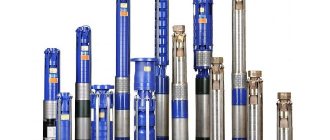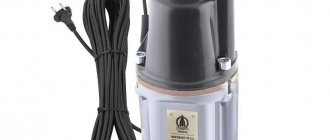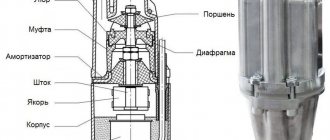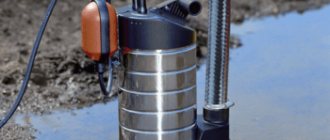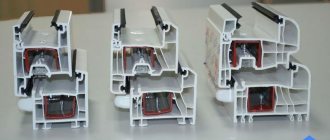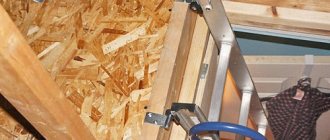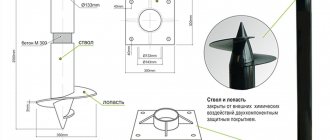Waste disposal is a sensitive but very important topic. Often, unwanted objects end up in the sewer system: these can be copious amounts of fat, bones, pieces of rags, leftover solid food and other substances, substances and objects that form plugs and blockages, and also complicate the optimal flow of water. In addition, as a result of design decisions and redevelopment, plumbing equipment may be moved from the sewer riser. Installing a fecal pump will help solve all this problem.
Varieties
Before choosing a fecal pump with or without a grinder, it is important to find out for what purpose you need this equipment. A household sewerage system can have several varieties. There are many options for classifying devices of this type, so it is worth considering those that significantly reflect their purpose and technical data.
Technical specifications
Household sewer pumping units have the following technical parameters:
- power. This is the main value on which the remaining capabilities of the device depend;
- height of liquid rise. Measured in meters, it shows to what height a given pump can supply wastewater;
- pipeline length. This value determines the length of the pipes with a slight slope towards the pump;
- wastewater temperature. For domestic installations this is an important value as the wastewater can be very hot. There are models with a temperature limit of up to +45°, there are more stable ones with an operating value of up to +85°;
- number of receiving pipes. Powerful models have 2 or 3 of them, low-power units have only one inlet and supply pipes;
- availability of additional components and devices. These include shredders and filters for removing odors.
When purchasing, compare the parameters of the pumping unit and the features of the drainage system. First of all, they determine the power of the device, then consider other indicators.
Also read: PVC-U pipes for external sewage system: features, advantages, application
Submersible
The fecal pump for pumping out sewage operates only when completely immersed in the pumped-out working environment. The body of the unit and its main components, due to the aggressive working environment, are made of high-quality materials and coated with a special compound. This pumping equipment is characterized by large dimensions and weight.
There is a significant variation in power: it is possible to install a fecal pump in a country house or in a small house, but there is equipment for multi-storey buildings with a power of up to 40 kW and a capacity of up to 400 m3 per minute.
Due to the immersion method and large mass, the pumping equipment is fixed to a special steel cable - similar to downhole submersible devices. Self-installation of a high-power fecal pump is a risky procedure that requires certain skills. Very often, these devices are equipped with a powerful cutting mechanism capable of grinding large solid inclusions with a diameter of up to 35 mm. Naturally, the cost of such equipment is quite high.
What to look for when purchasing?
Not a single company selling household pumps will sell products that are known to be of low quality. This is fraught with consequences such as conflicts with consumers, repairs at the expense of the company and additional costs. And most importantly, the company's image will suffer.
The level of pumps produced is quite high, with rare exceptions. Companies selling such units exclude from their assortment those products that have not proven themselves well in the market.
Cheap and high-quality pumps from European or domestic manufacturers are not sold on the modern market. Therefore, when choosing, you should always take this nuance into account. When purchasing, you should also check the fittings and connections , and before connecting the device, it is advisable to read the instructions.
Semi-submersible
A distinctive feature of this device is considered to be a special system, which is equipped with a float mechanism; subsequently, its operation, the water receiving and working parts are located below the sewage level, while the electric motor and other components are above. As a result, the cost of protecting the housing from leaks is reduced and the service life is increased. Another important feature that this fecal sewer pump has is the absence of knives, but at the same time it pumps inclusions with a diameter of up to 15 mm.
Semi-submersible units have fairly high power and can handle large volumes of feces and sewage. As a rule, they are equipped with a centrifugal pressure injection system, which ensures reliability and performance.
Installation of a fecal pump consists of connecting it to plumbing systems; in the working environment it is “free floating”. In addition, it is necessary to take into account the danger of short circuits and take special responsibility when connecting to the electrical network. Such devices, as a rule, are installed in houses where the bulk of the wastewater consists of feces and liquids, since the absence of a cutting mechanism will not protect the sewerage system from the ingress of unwanted fragments and objects.
Types of pumping equipment for the kitchen
There are several types of devices, depending on the tasks performed. All models pump out wastewater, but in different cases it is more effective to use different types of equipment. They are divided into the following types:
- sanitary;
- stationary;
- pumping stations.
Sanitary models are considered the easiest to install; they have low power and in most cases are mounted under the sink. As a rule, they do not have chopping knives in their design. The temperature of the waste liquid cannot exceed 40 degrees; such models are capable of draining wastewater from only one unit of plumbing fixtures.
Connecting a washing machine and dishwasher will not work. The advantage of this type is its small size, ease of installation and dismantling, and low energy consumption. Such a sewage pump is often installed in small apartments.
We suggest you read the step-by-step instructions for connecting a built-in dishwasher.
The stationary version in most cases is connected to several devices at once and is installed away from all plumbing. Such devices are suitable for treating hot water (up to 75 degrees) and have greater power. As a rule, they are equipped with grinding elements.
Domestic sewerage stations have the greatest capacity. The maximum vertical movement is approximately 10 meters, horizontal movement can reach 100 m. Such models are rarely installed in apartments, most often they are installed in country dachas and cottages. Adapted to high water temperatures, can work continuously for a long time.
Superficial
In this case, the name speaks for itself - the pumping equipment is located on the surface, and its connection to the working environment is carried out only through a pipeline system. This is the most suitable option for indoor use, since in outdoor conditions short circuits, corrosion processes and other undesirable phenomena often occur - even failure of the unit. At the same time, such equipment is characterized by a number of undeniable advantages: versatility, mobility and light weight.
This type of unit is characterized by low power. It is able to effectively deal with pollution no larger than 5 cm. For apartment conditions, this is enough. Also, do not forget about low electrical energy consumption and subsequent significant savings.
Installation of a fecal pump can be very diverse. Consumers install simpler models themselves in accordance with the recommendations specified in the instructions, but it is advisable to entrust the installation of non-standard and complex devices to specialists.
What are they for?
The need to install this equipment in an apartment can be caused by several factors, namely the redevelopment of simple city apartments. Sometimes, to create a comfortable space, it is necessary to move the bathroom and toilet to the center of the apartment.
Sometimes the kitchen must be moved from one room to another , so that the dishwasher and sink are next to the sewer riser. In this case, the pipeline will have to be broken, and this is fraught with the formation of blockages.
In addition, a new route will have to be laid for the pipe , which may run through the hallway or room. This is unacceptable. Sewage pumps for apartments can successfully solve such problems.
Stationary installation
Pumping equipment of this type is operated in a stationary mode if it is necessary to pump sewage into a septic tank located in accordance with sanitary standards, at a distance of at least 15 meters from a residential building, and at least 50 meters from a water well.
Another option for using a pump is the need for forced pumping of wastewater into the main sewer when the system is located above the level of the house and the outflow of wastewater is not possible naturally. In both cases, to ensure the operation of the sewage system, it is necessary to install a fecal pump in the well.
Selecting a sewage pump based on pressure characteristics
Before purchasing a pumping unit, you need to make sure that it will cope with your tasks. To do this, you need to open the passport and consider the pressure characteristics of the product, which looks like this:
For example, let's say you need to raise wastewater to a height of 4 meters. The pump productivity will be 65 l/min (3.9 m³/h). If this is enough for your needs, then this model is suitable for you. Also, manufacturers often make schematic pictures that show the ratio of the lengths of the vertical and horizontal pressure sections:
Preparatory work
To install a fecal well, you will need a receiving well measuring 50x50x50 cm. The most optimal capacity of the well should be no less than the average daily drainage volume, taking into account the number of people living in the house, but no more than 5 meters deep.
If the installation of a sewage pump in a country house or private house is planned in the ground, then the walls and floor should be concreted and reliable waterproofing should be ensured. To avoid unpleasant odors, the top lid must also be made hermetically sealed.
As a receiving well, it is very convenient to use a plastic container installed deep in the ground and providing a natural flow of wastewater. Installation of a fecal pump in a well should proceed as follows: in the upper part of the well there should be an inlet pipeline, which will ensure filling of at least 40 cm. The outlet pipeline should be diverted to the top of the well or the wall, it all depends on the location of the sewer line or septic tank . The diameter of the outlet pipeline must be no less than the outlet opening of the pump unit.
If the distance to the central sewer or septic tank is too large and is at the limit of the capabilities of the equipment used, then the pipeline should be laid as straight as possible, avoiding turns and bends or making them rounded and smooth.
Cleaning methods
Many people wonder how many times a year they should do it. It all depends on its size, the volume of water used, this must be done at least once a year. You cannot completely pump out all the sludge; you must leave it at about 20% of the total mass. This is done in order to initially infect the chamber with bacteria.
The length of the pumping pipeline has a great influence on the quality of cleaning. If the length is large, then it is necessary to install an intermediate well. Thus, it will be possible to carry out cleaning in two stages using a standard corrugated hose.
Greater results are achieved when the septic tank is cleaned more often; this can be done by both specialists and the owner himself.
Do-it-yourself sewage pump installation
Installation of a fecal pump is simple and accessible. Any craftsman with some skills in working with tools and mechanisms can install a fecal pump for cesspools. And not only. As soon as the arrangement of the well is completed, a pumping unit should be installed at its bottom. The metal supports provided by the design will ensure a minimum gap between the intake hole and the bottom of the well. For more reliable operation, the pump body can be suspended from a strong torso or placed on a supporting structure.
Experts do not recommend using a flexible hose as a discharge pipeline - during prolonged use this can lead to clogging. The best option would be a PVC pipe with a diameter of 63 or 75 mm, connected to the pumping equipment without sealing the connections.
To avoid backflow of liquid, after turning off the device, a check valve is inserted into the pipeline. The possibility of preserving the sewerage system is provided by a shut-off valve, which is installed in the pipeline behind the check valve. If the owner is absent from the house for a long time, the valve is closed, which makes it possible to cut off the fecal pump for cesspools from external wastewater. The outlet pipeline must be carefully insulated to ensure reliable operation in winter.
How to install a septic tank yourself
The problem of waste disposal in the absence of a central sewage system is familiar to almost all summer residents and not only. Previously, it was solved by creating cesspools. But they have many disadvantages: an unpleasant odor and other inconveniences. Now an excellent alternative to these pits has been created - the creation of a local sewerage system. called a septic tank. There are many different models on the market from different companies that produce septic tanks for country houses and cottages. However, you should know that you can create a septic tank for a cottage or houses yourself and install it yourself.
The septic tank is a local sewerage system with two levels of treatment.
Installing a septic tank with your own hands for a country house or cottage has a number of advantages compared to creating a cesspool:
- The installation will not create any unpleasant odors.
- Rarely resort to the services of a sewer truck or completely refuse them.
- Reducing the likelihood of soil contamination from household and hygienic waste.
- Possibility of using one pit (without moving or filling) for a long time.
These advantages are due to the positive factors of the septic tank design features.
They are available not only in ready-made models, but also in septic tanks built independently.
When creating, you must comply with basic requirements.
Electrical connection
The pump unit is connected through an electrical panel, which must be equipped with all the necessary protective devices. For example, an automatic switch that controls the occurrence of leakage current and short circuit current, as well as grounding, a control panel and protection for forcibly turning off and turning on the pump if necessary.
To ensure the normal functioning of the sewer system during an emergency power outage, it is recommended to purchase a diesel or gasoline electric generator of appropriate power.
Step-by-step instruction
- First of all, it is necessary to find a pressure pipe at the pumping unit, to which the pipeline is connected, through which the wastewater will be pumped out. The clamp is carefully tightened at the connection point using a screwdriver or pliers.
- Most models are equipped with a float switch. If it is present in the model you choose, then a check valve should be installed on the connected pressure hose, which will prevent water from flowing back into the tank.
- Immediately before installation, you need to check the operation of the unit. Carefully read the instructions for it, manufacturers' recommendations and certificates. Another important point is determining the direction of the shaft. To do this, a household drainage pump is installed on a table or floor and connected to the network. If the movement is to the right, it means the equipment is working correctly.
- The pump unit must be installed exclusively in a vertical position. Make sure that the pressure hose is also directed vertically. Its end is directed into a container where the liquid will subsequently be pumped.
- Finally, the pump is sunk to the bottom of the tank and connected to the power supply.
Commissioning works
When the installation of a fecal pump with a grinder (or without a grinder) is completely completed, the power supply is connected, the piping system is installed, you need to test the equipment and set the response level of the float switch.
The container is filled with clean water; first, the level should be minimal; the shutdown point is determined by a float sensor. Next, water is filled to the sensor response level required to start the pump.
A test run allows you to determine the functionality of the installed sewage system. If any problems are found in the operation of the equipment, they can be painlessly eliminated at this stage. If the test passes without any comments, the receiving well should be hermetically sealed. From this moment on, the sewerage system can be used without restrictions.
Scope of application
The scope of application of drainage pumps is determined based on their design features:
- A series of prolonged rains, spring floods or heavy melting of snow. Such a situation can lead to the fact that the storm sewer system will not fully cope with its purposes, which will result in flooding of cellars, basements of buildings, basement floors, etc. In this case, installing a drainage pump in the basement will allow emergency drainage work to be carried out .
- This unit can be installed on a permanent basis in the basement. A properly configured automation system will control the level of incoming groundwater and keep the room dry.
- Also, the installation of a drainage pump can be provided for servicing artificial reservoirs. Without this unit, it is impossible to maintain the required filling level in an artificial reservoir, or to carry out periodic drainage to replace and clean water.
- Accumulating tanks for drainage or domestic sewerage, storm sewers. Provided that they do not provide for independent liquid drainage.
- In addition, the installation of a drainage pump can be provided for discharging settled water into centralized collectors, natural reservoirs, filtration fields, or pumping it into reservoirs for subsequent technological use.
- Current sanitary rules prohibit even small car washes and workshops from operating without local treatment facilities. Dirty water is collected in primary collectors and pits, and then a sewer drain pump pumps it into the tanks of the treatment plant.
- These devices are actively used for irrigation agricultural work; they pump liquid from artificial and natural reservoirs to irrigated areas.
- This equipment is characterized by its versatility; it can be used not only for dirty, but also for clean water in autonomous water supply systems, filling high-mounted containers.
Cost and popular models
Today's pumping equipment market is impressive with its large assortment. Russian and foreign manufacturers offer products that can satisfy any consumer.
Grundfos, WILO, Pedrollo, are deservedly popular among buyers
Grundfos drainage pumps
The model range of the manufacturer Grundfos is represented by several types of submersible and external pumping equipment with different technical characteristics, but consistently high European quality.
Advantages:
- High power levels.
- The filtered particle size is up to 50 mm for some models.
- Convenient handles for carrying.
- Light weight.
- High level of liquid pumping.
- Increased wear resistance due to the use of non-corrosion steel.
The only disadvantages include the relatively high cost.
The price range for units of this brand ranges from 9,500 rubles to 100,000 rubles.
Is it possible to do sewer installation work with your own hands? How to choose a septic tank and install it? https://klimatlab.com/kanalizaciya/septiki/dlya-chastnogo-doma-kak-vybrat.html Find out by following the link.
Pedrollo drainage pumps
The Italian company has been a leader in its niche for a long time. Since 1974, leading Pedrollo specialists have been inventing new and improving old pumping systems. To date, the Pedrollo model range includes more than 100 units.
Advantages:
- Intelligent control over all production cycles results in only a high-quality product.
- Submersible devices are capable of operating stably at immersion depths of 20 meters or more.
- Automatic start and stop mode.
- High-quality, highly wear-resistant materials.
- Long service life if all rules are followed.
Flaws:
- The pumping equipment of this company is represented only by submersible models.
- High but reasonable price.
The cost of devices varies significantly due to technical characteristics and ranges from 6,500 to 50,000 rubles.
WILO drainage pumps
This German company produces and sells modern pumping equipment for heating systems, water supply, ventilation and air conditioning. The scope of services of this brand also includes the production of fire extinguishing systems and equipment for water parks and swimming pools.
In all of these areas, WILO has established itself as a reliable partner providing first-class products.
Advantages:
- The units are produced in two types: submersible and surface.
- Affordable price for powerful models.
- Mobility of devices due to low weight and simple installation method.
- Full adaptation of production technologies for Russia, thanks to joint cooperation.
- High quality materials and long service life.
No shortcomings were found in the models.
The price for WILO drainage equipment is quite reasonable, considering the quality of the device and a service life of up to 10 years. Minimum – 5500 rubles.
Video example of the operation of a drainage pump for pumping out a cesspool:
Important! Purchase pumping equipment only from official representatives or a trusted shopping center. You should not chase a low price - there is a big chance of running into a fake.
